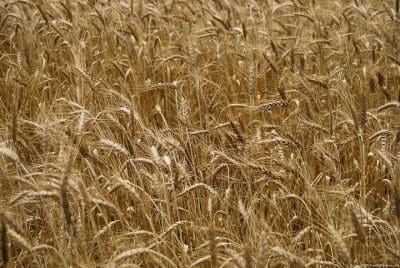THE total planted area for Australia’s 2017/18 winter crop is expected to remain on par with last year at just over 22 million hectares, according to Rabobank’s just-released Australian Winter Crop Update.
While the agribusiness bank also says in the report that after the record production achieved in 2016/17, early indications point to a return to five-year average annual production levels this season, based on total hectares planted and a net average start to the season across the country.
Albeit, considerable downside risks exist due to unfavourable climate forecasts during the growing season.
Rabobank senior grains and oilseeds analyst Cheryl Kalisch Gordon said with many growers already finished or well over half way through their planting programs and expected to complete them in the first weeks of June, overall total planted hectares were forecast to remain virtually unchanged on the 2016/17 season.
“Wheat planted area is likely to be steady year-on-year, while hectares planted to barley and oats are forecast to down by approximately seven per cent and 11 per cent respectively – the collateral of lower cereal prices,” she said.
“Despite low wheat prices and the attraction to plant more profitable crops, many growers will be continuing their wheat rotations as planned this season, instead substituting barley and oats planting with more profitable crop types.”
Canola is set for an increase in hectares from 2016/17 off the back of favourable planting conditions and relatively high prices while pulse plantings will also be up.
“For canola, March rain allowed planting to commence early in some regions, although some early planted canola in Western Australia may need to be re-sown due to dry conditions,” Dr Kalisch Gordon said.
“Canola hectares will increase over the five-year-average in WA, but elsewhere they are returning towards the five-year average.
“For pulses, plantings have again increased this season due to high prices – especially in South Australia, Queensland and northern New South Wales. Chickpea and lentils will contribute the majority of increased hectares planted to pulses in 2017/18.”
Seasonal start
Dr Kalisch Gordon said rainfall had been variable across Australia’s cropping regions for the start of the 2017/18 winter season.
“South-eastern Australia is in a strong position having received average to ‘well above average’ rain in April, while planting areas in Queensland and parts of Western Australia require rain before the planting window closes,” she said.
“South Australia has had good rains, though the Eyre Peninsula in particular await adequate falls.”
Factors to watch
The Update cautions that climatic conditions throughout the growing season will be one of the biggest watch factors this year, with the Australian Bureau of Meteorology rating the chances of an El Niño event occurring in 2017 at about 50pc.
With El Niño climate cycles historically associated with below-average rainfall across NSW, Queensland and Victoria, Dr Kalisch Gordon said this would put pressure on growers’ decisions around management of inputs, such as fertiliser, during the season.
Other factors impacting on the fortunes of growers this season include the maintained high levels of wheat plantings, despite low prices.
“While the lower Australian dollar is providing some offset, low wheat prices will deliver modest to low margins which will have cash flow implications,” Dr Kalisch Gordon said.
With a greater proportion of higher input/higher return pulse and canola hectares making up the cropping mix this season, there is also added disease risk facing growers due to the intensification of these crops.
Source: Rabobank



HAVE YOUR SAY